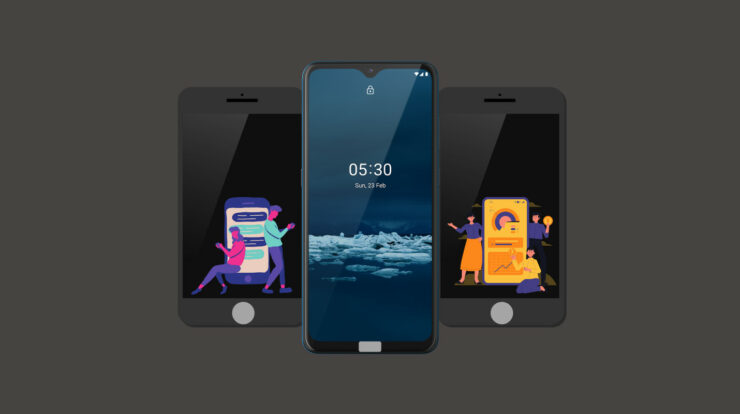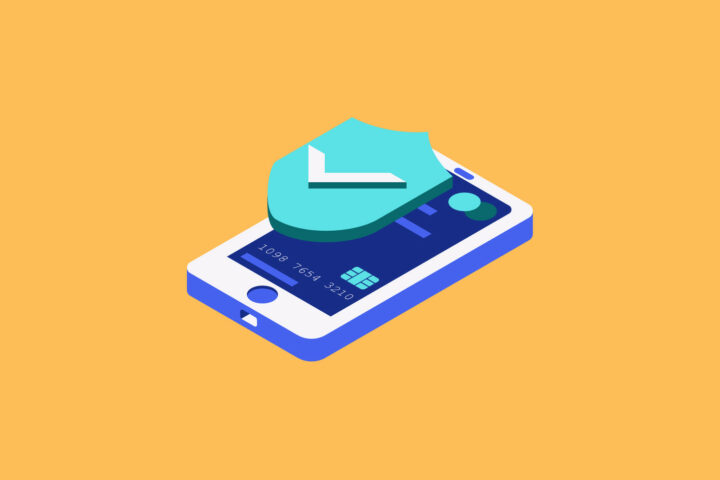
If you are an app developer, mobile app security isn’t an option for you. However, it is mandatory to have peace of mind once you’ve published the app.
You can ensure security in mobile application development by mirroring how attackers behave and anticipating the moves they’re likely to make. This way, you can unearth potential flaws in your lines of code and get them fixed before malicious perpetrators exploit them to repel potential future attacks.
How do you Secure Mobile Apps?
Ensuring security when building your mobile apps should be your topmost priority if you’re passionate about what you wish to achieve with your app. It doesn’t matter whether you develop mobile apps for your personal use or develop apps for businesses. However, one question that will most probably keep bugging you is; ‘how do you properly secure mobile apps?’
To properly secure your mobile app, you will first have to acknowledge the existence of mobile security issues and then think like hackers to repel them. Importantly, you will also need to acknowledge that mobile security issues evolve. Hence, you need to put in place updated security features to keep your app safe for users. Here are six mobile app security valuable suggestions you can use as your mobile app security checklist to secure the mobile apps you build.
1. Be Careful with Libraries
Using third-party libraries may sound like a brilliant idea, especially if you’re working on a tight budget. However, they also contain a bucket load of resources you may find very useful for your app development projects.
These libraries are not made the same, though. As much as some of them may be so appealing, some can pose severe security risks for your app. Take, for example, the GNU C Library.
It is pretty famous among developers but still harbors a security flaw that could allow hackers to remotely execute a particular malicious code and bring a system down through Denial of Service (DoS) attacks. Interestingly, this vulnerability wasn’t discovered for a whopping seven years.
Therefore as a developer, you must be extra careful when using these libraries. It would also be best to utilize controlled internal repositories and use robust policy controls at the acquisition stage to keep your mobile apps safe from the risk profiles in the libraries.
2. Penetration Tests
It may not be a wise idea to publish your mobile app before having it rigorously tested against different security scenarios. Here is where pentesting or penetration tests come into play.
Penetration testing is a cybersecurity technique app developers use in identifying, testing, and highlighting flaws in their apps. Penetration tests mimic the actions and strategies a motivated attacker may want to use to break into your app.
You can use penetration tests to evaluate the possibilities of your mobile apps being hacked or to adhere to compliance regulations in your industry. After penetration testing, your team of ethical hackers will supply you with reports you can use when applying patches to your mobile app.
3. Source Code Encryption
A big percentage of the code in native mobile apps is kept on the client-side. Here, malware can track the risk profiles and bugs within the app’s design and source code.
Cybercriminals use techniques like reverse-engineering to repack legitimate apps into devious apps and then upload them to third party app-stores. When unsuspecting users download these apps, they would be met with a slew of cyberattacks. Again, this is something that may only end up damaging your brand’s reputation.
To manage this risk, you should put in place powerful tools that can help you detect and address risk profiles promptly. Your app’s security should also be robust enough to resist reverse engineering or any tampering attempts, and this is where encrypting your app source code also comes in.
The encryption, in this case, will ensure that potential malicious actors cannot read your app data. You may want to use a code signing certificate to let your target audience know where their code is coming from and who is generating it and that the mobile app they’re downloading is original. As a developer, this digital signing certificate provides security to your applications with digital signatures while also giving your customers some level of trust.
4. Minimize the Storage of Sensitive Consumer Data
To improve mobile app security and keep user data safe, most app developers opt for storing the pieces of data in the user’s device’s local memory. However, storing sensitive user data in the device’s local memory isn’t always a good idea as it may only increase the security risks.
With that in mind, it would help if you minimize the storage of sensitive data unless necessary. But, even if it’s necessary to store the user data, ensure they’re encrypted to discourage attackers who may want to steal them.
Wrap up by activating an auto-delete feature to minimize the log. Again, if you do not need the consumer data on your servers, it would help if you kept them encrypted on the devices.
This would help in instances where just one of your customers becomes a victim of a cyber attack. In this case, the hacker will only manage to access the information of an individual user.
On the contrary, if you stored all confidential user data on your server and it gets hacked, the cybercriminals will manage to access your users’ data which would be catastrophic to your company. Therefore, always be extra cautious when thinking of storing sensitive user data in such high-value targets.
5. Implement the principle of least privilege
According to the rule of ‘Least Privilege,’ your code should only run with the permissions it needs and nothing else for security in mobile application development. Therefore, you should ensure that your app doesn’t request any extra privileges that aren’t necessary for it to work.
For instance, if you do not need access to your customer’s contacts for your app to function at optimal levels, do not request it. On the same note, your app shouldn’t be making unnecessary network connections as such activities may only increase the vulnerability of the apps.
6. Encrypt All Pieces of Data
It would be best to encrypt every piece of data exchanged over your app and the server to protect against attack mechanisms like Man-in-the-Middle (MITM) attacks. In this regard, you can use HTTPS to encrypt all messages shared between the server and the client.
To use HTTPS in data encryption, you will need to install an SSL certificate on your server. However, there isn’t a lot you will need to do on your client-side since the TLS/SSL protocol will be taken care of by the device’s Operating System (OS).
Take Away
Successful hacking attempts cannot only damage your reputation but also end up crippling you financially. It would help if you didn’t wait until you experience an attack. Deploy the necessary security features to keep you safe from potential attacks.



